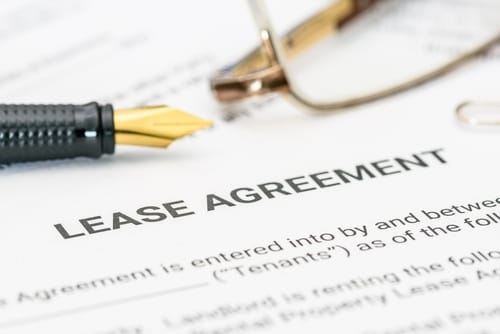Our business is strongly viable, but we would like to close down one of our factories, offices or shops as the liability is dragging the whole business down. What can we do?
This is a very common request. When we get involved with new clients, often directors have well developed thoughts and business plans to deal with falling sales, profits or loss of a market. This may involve planning for a reduction of fixed costs for property under leases. This coupled with reduction of employment costs by exiting property obligations can often help strong management teams turnaround a failing business.
This is a complex subject and recent case law and practice have brought in some changes that are important for directors and insolvency advisors to be aware of and to plan for in any turnaround work using a CVA.
We can guide you how to remove lease obligations for your company
It should be noted that the CVA process itself does not actually terminate the lease nowadays, but a well drafted CVA proposal can set out a plan to remove the major costs of rent, service charges, ancillary charges such as water rates, insurances and utilities costs. Business rates can be bound into the CVA process, and this complex topic is dealt with below. In many companies these costs in aggregation can be damaging to profits and cashflow.
Well drafted CVAs can remove the cost obligations so the tenant can leave. It is a subtle difference but important from a legal point of view.
Without recourse to shareholders for capital or debt/bond facilities to ride out the storm, many larger groups are entering protective insolvency by closing stores or trying to survive by restructuring.
Fragility is the order of the day for undercapitalised companies. Meeting bank covenants, meeting rent quarter days and paying VAT /PAYE when due, are impossible juggling acts to achieve when cash take at the till is below budget or sales have fallen.
So how can RMT KSA help a retailer or other company restructure?
Using a company voluntary arrangement (CVA) we have helped companies to exit those non performing properties and terminate the formal lease, thus crystallising the liability. Rent payments are stopped and the landlord can be prevented from taking recovery action.
How can the CVA approach work?
Well, we start with your turnaround plan!
It is vital that the proposals are well thought through and carefully structured using expert CVA drafts people and expert insolvency solicitors to advise on accurate wording.
The CVA proposal itself must be based on careful financial forecasts prepared in support of the turnaround plan, our modelling and forecasting team have huge expertise in this field. We can plan and work through the “what if scenarios” for our clients.
For example, “what if” we closed 12 stores out of 20”? or what if we had reduced rent on some of the 12 and exited the rest? What if we only need one warehouse or factory?
By modelling the changes at granular shop or property level we can ascertain if a shop (for example) could be viable if the rent was reduced for say years 1-2 at 50% of rack rental. In some cases, shops are so poorly performing that even zero rent would lead to losses at the operating level of that shop. So, it would become a surrender or termination candidate in our plan.
Working through in great detail for each part of the business in advance we can set out an overarching viable plan for the company’s CVA restructure. It is then vital to draft the CVA based on this work, whilst simultaneously negotiating with the landlords.
Detailed negotiations commence with the landlord to initially enquire if a surrender of the lease is acceptable to the landlord. If landlords refuse to accept a surrender pre CVA (and most would not agree unless they have a new tenant opportunity) then the more formal discussion about the CVA process and options will take place.
The CVA proposal should set out the plan for each property, or group of properties seeking rent reductions. Or those in a group that are being closed to be exited. It is quite normal to have several different group scenarios, in multiple retail CVAs for example. In a recent case we had 4 separate groupings such as A, B C and D. in that case group A shops we sought 25-50% rent reduction from the landlords. D sought full termination of the lease costs.
If an informally agreed surrender is not forthcoming, then the company should consider exiting the property before finalising/publishing the CVA proposal. Although in some cases occupation can continue for a short period, with the landlord’s acceptance. Perhaps to remove plant and equipment, hold a closing down sale or to deal with employee issues.
RMT KSA helps our clients with their plan, (or our experienced turnaround team can build and set out a new plan), the required deal structure, turnaround management, building the proposals and forecasts, driving the deal with landlords and other creditors. This work helps the board through the crisis.
Please note that it is not generally necessary for Administration to be used for this approach! Thus, it is cost effective and powerful with lower cashflow consequences. Stock and fixtures (as long as not landlords) can be removed and mitigate against loss of value.
As above many companies face a difficult future because of their lease hold obligations, normally there is no exit. However, we use comprehensive and robust CVA proposals coupled with CASE LAW and expert practice.
The following case law has been used for some years now to terminate leases with no cash cost to the company. Although, do note that if you have personally guaranteed the lease this liability does remain.
Re: Doorbar v Alltime Securities Ltd (1995) BCC 1149 stated that landlords can be bound by voluntary arrangements for future obligations under a lease.
Re: Cancol Ltd (1995) BCC 1133 that the word ‘creditor’ in r1.17(1) IR 86 was wide enough to include a landlord with a right to future rent i.e. the ability to include future rent extends to CVAs as well as Individual Voluntary Arrangements.
Furthermore, where the unliquidated or unascertained claim in a CVA involves future rents accruing to a landlord, the case of Re Park Air Services [1996] BCC 556) gives the CVA meeting chairman some considerable guidance as to quantifying the claim at the meeting.
The CVA and lease process in 2025
A well drafted CVA should set out the debtor company’s plan for each property, shop or factory in the proposals as set out above. In addition, the CVA proposal should outline the specific conditions under which the landlord can terminate the lease post CVA approval. These conditions may include deadlines, the required form of notice, and deeds of variation for change of rent payable and the landlord’s ability to take back the property.
Landlords will generally be able to vote in CVAs for the following liabilities:
- Arrears of rent to the date of the CVA being voted upon by creditors at a decision-making process (AKA a creditors meeting).
- Arrears of service charges or costs to the date of the CVA being voted upon by creditors at a decision-making process (AKA a creditors meeting).
- Future rent that would have been paid but for the so-called VOID period. In other words, the period from the CVA creditors meeting to the landlord signing a new tenant lease. We employ expert property surveyors to assess that likely void period. Often this can be between 12 and 24 months.
The difference in rack rental of the existing lease and what the new tenant pays. Again, we employ expert property surveyors to assess that likely void period. Often this can be between 12 and 24 months. - Dilapidations costs. Under case law this is usually voted at £1. Re: Newlands Seaford Educational Trust Case Number 3821 2006.
If the landlord incurs future repairs or dilapidations costs these form their CLAIM in the CVA scheme in the future. So, they have to spend money on renovations or incur the cost to make a valid claim.
Dilapidations issues in CVAs can be complex – please speak with us if you have any questions on your case.
All of this requires expertise and experience of dealing with complex property matters. The team at RMT KSA which owns www.companyrescue.co.uk website has 30 years’ experience using CVAs to drive changes to costs in business. We also have a good reputation with many landlords, for fairly helping them and our clients negotiate terms to benefit both debtor company and the property owners.
Non Domestic rates and CVAs: well, each case is DIFFERENT!
Rates liabilities in arrears are ordinary unsecured creditors in a CVA scheme. In the CVA voting process, councils can vote on these arrears liabilities and on remaining rates amounts for the period up to the end of the fiscal year. But what of FUTURE rates liabilities.
Generally, the future rates are bound into the CVA debt UNTIL the new tenant starts being liable for the rates due to their new occupation of the property. BUT and it’s a big but “each case is different”.
Summary: well-structured CVA proposals and case law can facilitate cost reduction for properties, salaries, associated property costs and utilities. This can help “cut the cloth” according to the company’s plans for survival. But this is complex turnaround and formal insolvency work. Speak to us soon if you have any questions. If you are a director or advisor and you are interested in just how this process applies to you or your clients business, please speak to Keith Steven 0800 9700539 or 07974 086779, or one of our director team.



